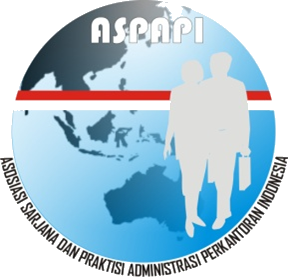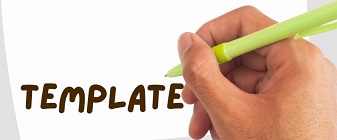MICE's Human Resources Development Strategy in Increasing the Competitiveness of the Event Organizer in South Sulawesi
(1) Politeknik Pariwisata Makassar
(2) Institut Agama Islam Parepare
(*) Corresponding Author
DOI: https://doi.org/10.26858/ja.v8i1.18176
Abstract
Tourism in the MICE sector is one of the fields that increases the income of the tourism sector. Business visitor/MICE expenditure in Thailand 3.5 times leisure visitor. This study aims to determine the quality and strategy of human resource development for the MICE Event Organizer in South Sulawesi. This research uses a qualitative descriptive approach. There were four informants in the study. Data collection techniques used were observation, interviews, and documentation. Data analysis techniques, namely data classified and analyzed with theories related to the object of research. The results of the research are the quality of MICE Human Resources at the Event Organizer in South Sulawesi Selatan is quite good and the MICE Event Organize HR Development Strategy in South Sulawesi, namely 3 main strategies, namely development through internships and guidance, development through education and training and career development.
Full Text:
PDFReferences
Alwi, S. (2011). Manajemen Sumber Daya Manusia Strategi Keunggulan Kompetitif. BPFE UGM, Yogyakarta.
Boes, K., Buhalis, D., & Inversini, A. (2016). Smart tourism destinations: ecosystems for tourism destination competitiveness. International Journal of Tourism Cities. https://doi.org/10.1108/IJTC-12-2015-0032
Cohen, S. A., Prayag, G., & Moital, M. (2014). Consumer behavior in tourism: Concepts, influences and opportunities. In Current Issues in Tourism. https://doi.org/10.1080/13683500.2013.850064
Evans, N., Campbell, D., & Stonehouse, G. (2012). Strategic management for travel and tourism. In Strategic Management for Travel and Tourism. https://doi.org/10.4324/9780080498294
Hasyim, D., Gunawan, A., Sudi, M., Mustafa, D., & Rijal, R. (2020). The Government’s Role in the Development of Yendi Beach Tourism Destinations in Biak Numfor Regency. Jurnal Ad’ministrare, 6(2), 186–189.
Higgins-Desbiolles, F., Carnicelli, S., Krolikowski, C., Wijesinghe, G., & Boluk, K. (2019). Degrowing tourism: rethinking tourism. Journal of Sustainable Tourism. https://doi.org/10.1080/09669582.2019.1601732
Kadji, J. (2015). Optimalisasi Tata Kelola Sektor Pariwisata di Kabupaten Gorontalo. Jurnal Ad’ministrare: Jurnal Pemikiran Ilmiah Dan Pendidikan Administrasi Perkantoran, 2(1), 1–15.
Kirkpatrick, D. L., & Kirkpatrick, J. D. (2008). Evaluating Training Programs: The Four Levels. In Evaluating Training Programs.
MICE. (2015). Meetings, Incentives, Conventions and Exhibitions (MICE). Journal of Convention and Event Tourism.
Muhtasom, A., & Ab, A. (2019). Kahayya Village as a Priority Destination for Rural Tourism Development Policy in Bulukumba Regency. Jurnal Ad’ministrare, 6(1), 1–8.
Nuryanti, W. (1996). Heritage and postmodern tourism. Annals of Tourism Research. https://doi.org/10.1016/0160-7383(95)00062-3
O’Riordan, T., Mathieson, A., & Wall, G. (1983). Tourism: Economic, Physical and Social Impacts. The Geographical Journal. https://doi.org/10.2307/634029
Prasodjo, T. (2017). Pengembangan Pariwisata Budaya dalam Perspektif Pelayanan Publik. Jurnal Office, 3(1), 7–12.
Sedarmayanti. (2018). Tata Kerja dan Produktivitas Kerja. In Bandung, CV Mandar Maju.
Wilkinson, P. F. (2001). Information and Communication Technologies in Tourism. Annals of Tourism Research. https://doi.org/10.1016/s0160-7383(01)00012-3
Winowatan, W. J. (2019). Persepsi Stakeholder terhadap Kurikulum Berbasis Kompetensi Politeknik Pariwisata Makassar (Studi pada Industri Perhotelan Kota Makassar). Jurnal Ad’ministrare, 5(2), 123–128.
Ye, Q., Law, R., Gu, B., & Chen, W. (2011). The influence of user-generated content on traveler behavior: An empirical investigation on the effects of e-word-of-mouth to hotel online bookings. Computers in Human Behavior. https://doi.org/10.1016/j.chb.2010.04.014
Zainal, V. R. (2015). Manajemen Sumber Daya Manusia. Manajemen Sumber Daya Manusia Untuk Perusahaan Dari Teori Ke Praktik.
Article Metrics
Abstract view : 420 times | PDF view : 90 timesRefbacks
- There are currently no refbacks.
Copyright (c) 2021 Dharma Kuba, Fuad Guntara

This work is licensed under a Creative Commons Attribution-NonCommercial-NoDerivatives 4.0 International License.






























 under a
under a